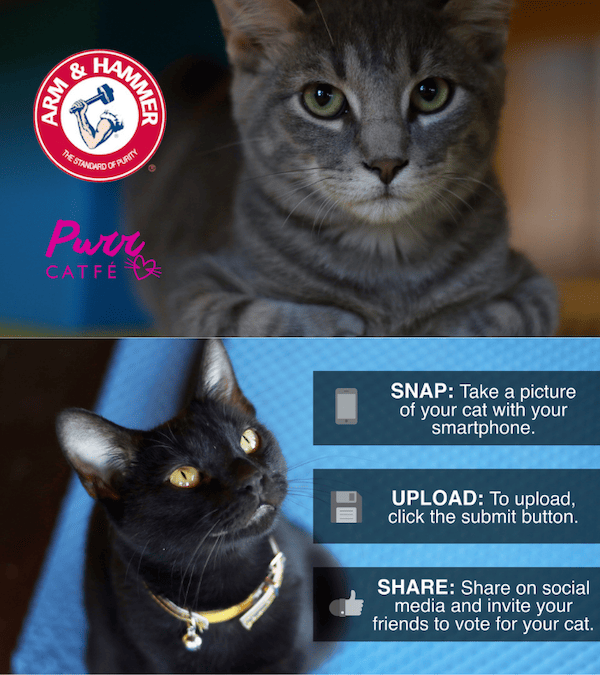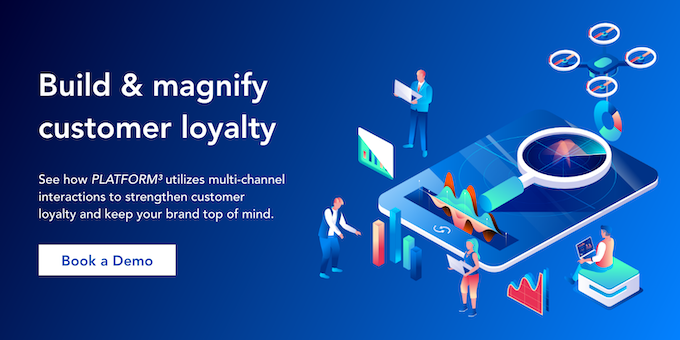How User-Generated Content Marketing Fosters Customer Loyalty
Content is key to shaping a brand’s identity, nurturing sales and engagement, and fostering customer loyalty. It tells audiences who they are, what they have to offer, and how they stand out in today’s crowded marketing landscape. However, not all of a company’s content is created by the company itself. Brands often incorporate user-generated content into their marketing strategies to showcase their products and services in a consumer-centric way. What is user-generated content marketing, and how does it drive user retention and customer loyalty?
What is user-generated content?
User-generated content, also known as UGC or consumer-generated content, is any type of original content created by a brand’s audience, rather than by a brand’s marketers or partners. Most user-generated content can be found online through social networks, company websites, comment sections, and discussion forums. UGC includes product reviews, photos and videos, and comments, testimonials, and feedback.
Most user-generated content is created by a brand’s customers, either by their own doing or because brands asked for it. Customers might share photos and videos of them unboxing and using a product, or leave reviews on a brand’s website and comments on their social posts. UGC can also come from brand advocates, who have a strong dedication to a company, and influencers, who have a notable following of their own. Lastly, UGC can come from a brand’s employees, who create content about their employer outside of the company’s marketing efforts. For example, clothing brand employees might post photos of themselves wearing the latest collection on their own social accounts to generate additional interest.
Benefits and challenges of user-generated content
The main advantage of user-generated content marketing is its ability to build brand communities, authenticity, and meaningful connections. Today’s consumers are quick to point out flaws and false sentiments in a brand’s marketing campaigns, and are more likely to place their trust in other people. As a result, user-generated content acts as the modern-day equivalent of word-of-mouth marketing, where consumers share content about what they enjoy for everyone to see. This helps build a loyal, engaged brand community over time, which validates a company’s trustworthiness and reliability in the eyes of its audience.
User-generated content marketing also decreases a brand’s costs while increasing conversions, revenue, and customer lifetime value. Rather than constantly generating new ideas or creating new content, marketers can incorporate customers’ photos, videos, comments, and reviews into their marketing strategies. As user-generated content creates consumer-driven credibility and influences purchase decisions, it also builds an audience of qualified leads and loyal customers that result in more sales and other desired conversions. UGC helps reduce the amount spent on acquiring new leads and increase the value of each individual customer over time.
The main disadvantage of user-generated content marketing is the potential for legal issues and negative content. To avoid this, marketers should ensure that they have permission to use their audience’s content and give credit to the original owner. For example, when reposting a customer’s photo, they should ask for their consent and tag their social account. Brands should also monitor and moderate user content for spam, misinformation, and harmful language. For example, if users are spreading false information about their products on a discussion forum, marketers should step in to prevent further confusion.
Best practices for user-generated content marketing
Develop content curation and evaluation strategies
The amount of user-generated content available on any given marketing channel can be overwhelming, especially for established brands. Marketers should focus on quality over quantity when developing a thorough content curation system. Depending on the brand, they can create hashtags, shared Pinterest boards, collaborative photo galleries, or even a user submission landing page to narrow their content streams down to a few select sources.
Marketers should also determine what qualities they look for in user-generated content. For example, do they want to share photos that are more focused on the customer or more focused on the product? When posting user feedback, do they want to feature reviews that are helpful, humorous, or somewhere in between? This helps companies narrow their focus even further and develop a consistent brand voice and identity.
Leverage positive and negative feedback
Much of content curation relies on social listening, in which brands monitor online spaces like social networks and discussion forums to see what people are talking about. Comments, reviews, and testimonials help marketers gain deeper insights into their audience’s needs and motivations. When collecting user-generated content, brands might learn that their latest product release was especially popular or that their recent marketing campaign was mostly ineffective.
They can then use this information to grow, improve, and share their progression with their customers. For example, if a brand updates their website navigation based on negative user feedback, they could create a dedicated blog post and share it on social media. This demonstrates to customers that their voices and opinions matter, fostering a deeper sense of mutual trust.
Prioritize user consent and privacy
Companies face potential legal risks when sharing content that isn’t theirs. Users may not want their content to be shared with everyone, even if they tag a brand or use a brand’s hashtags. Marketers should always reach out to customers through emails, comments, or direct messages to get their explicit consent and keep a record of their responses. They should also provide credit by including people’s usernames and tagging their social accounts. If they want to use people’s actual names, locations, or other personal information, they should ask before doing so. Not only does this help brands navigate consent and privacy concerns, but it also creates stronger trust between company and consumer.
Foster representation and inclusiveness
User-generated content provides marketers with the perfect opportunity to amplify their audience’s voices. Rather than focusing on specific buyer personas or customer segments, brands should share content from a diverse number of perspectives. This makes them more accessible to a wider range of consumers, expanding their growth and reach. They may also find more qualified leads or discover an entirely new audience, all while practicing representation and inclusivity. For example, companies who typically cater to older generations might learn that they also have a number of younger followers. Diverse user-generated content marketing feels more authentic and relatable, helping brands build active and engaged audiences.
Create value, authenticity, and connections
When curating and sharing user-generated content, marketers should prioritize content that creates value for themselves and for other users. This may depend on their marketing goals, such as increasing brand awareness or improving brand sentiment. For example, if they want to educate audiences, they can share videos of customers using their products. If they want to boost sales, they can post reviews and testimonials. Marketers should also prioritize content that encourages conversations and engagement. For example, they might share an influencer’s blog article comparing their products and ask people to voice their own opinions. They could post a photo of two customers using their product and ask people to tag a friend. User-generated content marketing ultimately creates connected communities of brands, followers, and potential customers.
User-generated content marketing strategies
Create a branded hashtag
Unique hashtags are one of the easiest ways for brands to distinguish themselves from the rest. It also helps them shape their brand identity, increase their traffic and reach, and curate user-generated content. Some branded hashtags include the company’s name, such as Coca-Cola’s #ShareACoke and Calvin Klein’s #MyCalvins. Others use a more conversational approach, like Always’ #LikeAGirl campaign or Domino’s Pizza’s #LetsDoLunch. Some brands even take a humorous route, such as Charmin’s #TweetFromTheSeat and Red Bull’s #PutACanOnIt.
Brands can also create multiple hashtags for different purposes, such as for individual products, marketing campaigns, special events, or specific types of user-generated content. This helps marketers aggregate information, track their user engagement, and compare performance over time. For example, Purina, a pet food company, created hashtags for each of their individual product lines. They also popularized the #PetsAtWork hashtag to educate people about the benefits of pet-friendly workplaces while encouraging followers to share photos and videos at the same time.
Update product pages, email campaigns, and in-store marketing
Brands don’t necessarily have to limit user-generated content to social networks and promotional campaigns, as it can also be integrated into their day-to-day marketing strategies. For example, companies can create a curated social feed using their brand hashtag for their website. They can share their favorite photos, reviews, and blog articles in their email campaigns and encourage customers to submit their own.
Some brands also include user-generated content on their product pages and in-store marketing displays to give shoppers a better idea of how other customers use their products. For example, Pottery Barn’s product pages feature a #MyPotteryBarn section to showcase how people style their furniture and home decor. This helps demonstrate the versatility of their products, inspire shoppers to make a purchase, and creates a sense of transparency and relatability.
Run a contest, sweepstakes, or giveaway
Contests, sweepstakes, and giveaways drive awareness, engagement, and customer acquisition. Marketers can also use contest marketing to collect user-generated content by asking participants to submit photos, videos, comments, and reviews as part of their entry. Prizes like cash rewards and free products give users an incentive to create and share their own content. Promotion-specific hashtags also help brands expand their reach and generate interest, leading to increased contest participation and the potential for new customers.
When combined with contest marketing, user-generated content marketing can help brands increase sales for specific products as well. For example, Church & Dwight, a household product manufacturer, ran a ‘National Pet Month’ user-generated content promotion, exclusive to consumers in Arkansas. Shoppers were asked to purchase Arm & Hammer cat litter, then share a photo of their cat on social media and vote for their favorite contest entries. At the end of the promotion, the person with the most votes received a year’s supply of cat litter.
Collaborate with influencers, advocates, and communities
User-generated content acts as a form of social proof, meaning it validates a brand’s reliability through its audience and not through the brand itself. Companies should take advantage by working with trustworthy influencers, advocates, and brand communities. For example, they can send free products to brand advocates and ask them to create blog and video reviews. Marketers can partner with influencers for product launches and interactive livestreams. Lastly, brands can get more involved with their own community by regularly sharing user-generated content, participating in online discussions, and hosting exclusive events.
Some companies include influencers and advocates in the product development process to further prove their genuine interest in consumer feedback. For example, Patagonia, an outdoor clothing retailer, is best known for its focus on sustainability and social responsibility. Their brand ambassador program consists of influential athletes from different disciplines, such as climbing, surfing, and skiing. Patagonia’s ambassadors work with their product development team to test their products in harsh conditions and help guarantee their durability. This creates social proof, as it demonstrates to potential customers through trustworthy influencers that their products are responsibly-made and will last for a long time.
Incorporate user-generated content into your marketing campaigns to nurture customer loyalty
When creating and fostering customer loyalty, companies should look to user-generated content to build trust, authenticity, and impactful brand communities. User-generated content marketing helps reduce costs and nurture engagement in every stage of their customer’s path to purchase through social proof and value creation.
3 tier logic’s PLATFORM³ helps brands create marketing campaigns like sweepstakes and contests, loyalty programs, and more to drive brand awareness and user engagement. Modules like Dynamic Messaging and Data Capture & Analytics provide marketers with the knowledge and tools they need to make informed business decisions and strengthen their customer loyalty strategies. To learn more, book a demo with our team today.





